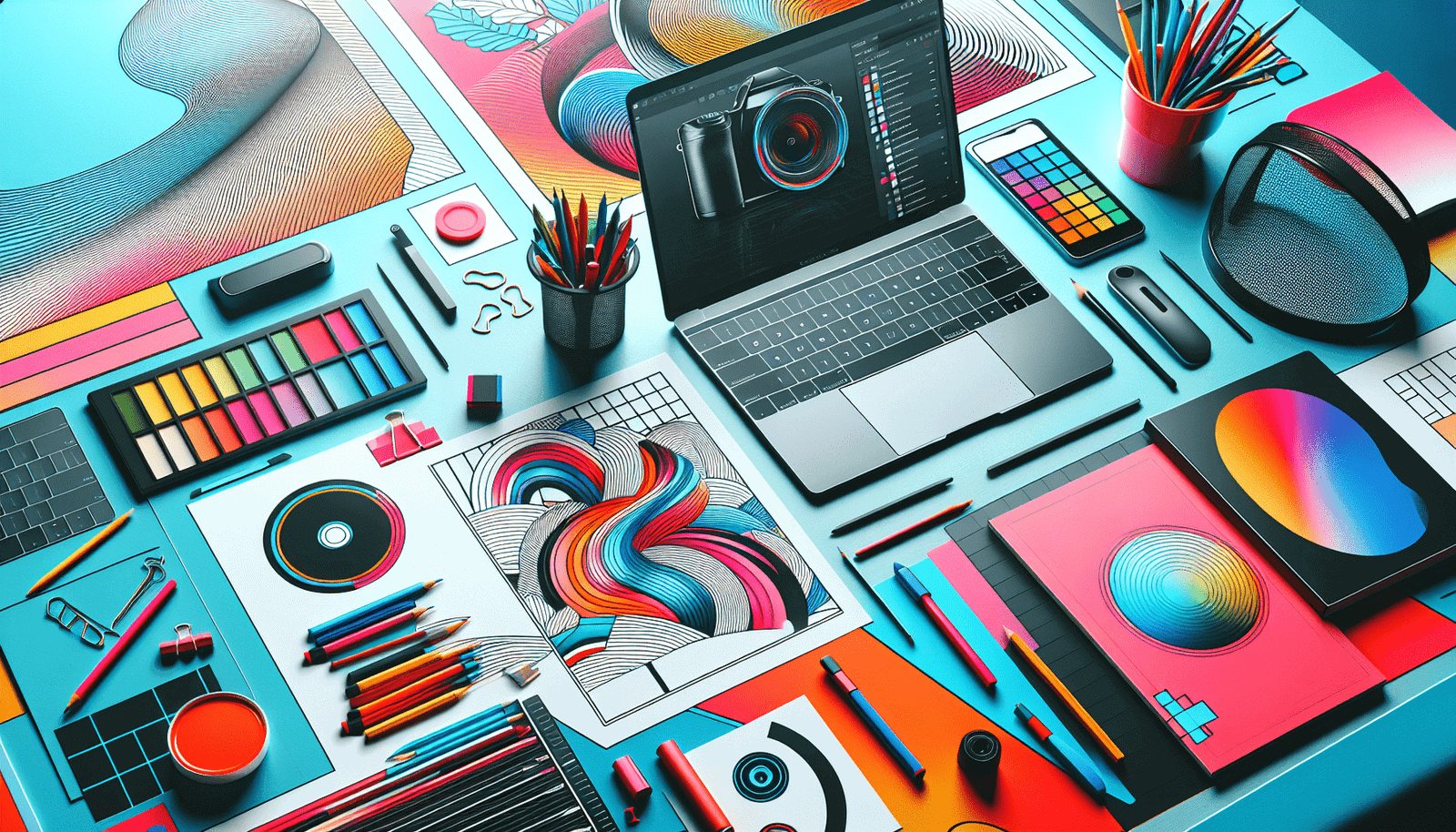Have you ever imagined the world of opportunities available to freelance designers? The digital age has transformed how creativity meets business, and nowhere is this more evident than in the realm of freelance design. Whether you’re considering leaving your nine-to-five job or you’ve always been intrigued by the freelance world, this article will guide you through everything you need to know about becoming a freelance designer and how to cultivate a thriving career.

Understanding Freelance Design
Freelance designers are professionals who offer their creative skills on a project-by-project basis to different clients. Unlike traditional employment, freelance design offers flexibility, diversity, and the opportunity to work with various brands and industries. Yet, it also presents unique challenges that require strategic navigation.
The Essentials of Freelance Design
As a freelance designer, your work revolves around creating visual content using different tools and platforms, often involving graphic design, web design, branding, illustration, and multimedia projects. Mastery in your design specialty is critical, but understanding the broader landscape of your profession can set you on a path to success.
The Freedom and Challenges
Freelancing offers unparalleled freedom, whether it’s setting your hours or choosing clients aligned with your vision. Yet, this freedom comes with the responsibility of managing your own business and sustaining a stable income flow. It’s about achieving a balance between creativity and entrepreneurship.
Setting Up Your Freelance Design Business
Stepping into freelancing means you’re essentially starting a small business. From branding yourself to establishing an online presence, there are several critical steps to ensure you get off on the right foot.
Crafting Your Brand
As a freelance designer, you’re the brand. Craft a personal brand that reflects your unique style and strengths. Your brand should be consistent across all platforms, from your website and portfolio to your social media and business cards. Ask yourself what makes your work unique and how you want clients to perceive you.
Creating an Impressive Portfolio
Your portfolio is a visual representation of your skills and style. It’s not just about showcasing your best work—it’s about telling a story. Focus on quality over quantity, and make sure each piece demonstrates your ability to solve design challenges creatively and effectively. Consider including case studies that describe your thought process and methodologies.
Establishing an Online Presence
In today’s digital era, being discoverable online is crucial. Create a professional website that includes your portfolio, contact information, and a brief bio. Utilize social media platforms like LinkedIn, Instagram, and Behance to network with potential clients and showcase your work. Your online presence should be as polished and professional as your design work.
Navigating the Design Marketplace
Freelancers increasingly rely on online platforms to find work and connect with clients. Each platform has its own set of rules, audience, and job types, so understanding these platforms will let you leverage them effectively.
Popular Freelance Platforms
There’s a myriad of platforms where freelance designers can find work, each catering to different needs and styles of work.
| Platform | Features | Ideal For |
|---|---|---|
| Upwork | Large variety of job listings, secure payment | Designers seeking diverse projects |
| Fiverr | Quick gigs, easy setup | Freelancers looking for short-term work |
| Freelancer | Contest system, large number of jobs | Designers open to competitive work |
| 99designs | Design competitions, client interaction | Designers specializing in logos, branding |
| Behance | Portfolio showcase, community engagement | High-end, artistic networking |
Attracting the Right Clients
To attract clients who value your work, it’s essential to know who your ideal clients are and where they spend time. Tailor your pitches to their specific needs, highlighting your relevant experiences and how you can meet their objectives.
Pricing Your Services
One of the biggest challenges in freelancing is pricing your work fairly and competitively. Understanding how to price your services is key to ensuring you sustain a profitable business.
Factors Influencing Your Rates
Consider your experience, the complexity of the project, industry benchmarks, and your financial goals when setting your rates. It’s also crucial to factor in non-billable hours spent on tasks like marketing, client communications, and administrative duties.
Pricing Models
There are several pricing models to consider. Hourly rates are straightforward and ensure you’re compensated for your time, but can be limiting for projects that value outcome over hours. Fixed pricing, meanwhile, works well for clearly defined projects, offering both you and the client clarity and security.

Managing Your Freelance Business
When freelancing, there’s more to juggle than just design work. You’ll also need to manage your business operations efficiently.
Project Management Tools
Using project management tools can help you manage multiple projects effortlessly. Tools like Trello, Asana, and Monday.com can help you keep track of deadlines, client communications, and personal productivity.
| Tool | Purpose | Features |
|---|---|---|
| Trello | Task and project management | Visual boards, lists, cards |
| Asana | Task and team management | Timeline view, automated workflows |
| Monday.com | Project management | Customizable dashboards, time tracking |
Financial Management
As a freelance designer, managing your finances effectively is essential. Utilize accounting software like QuickBooks or FreshBooks to keep tabs on your income, expenses, and tax obligations. Keep your business finances separate from personal accounts for clearer budgeting and tracking.
Client Communication
Strong communication skills can differentiate a good freelance designer from a great one. Set clear expectations with clients at the beginning of each project and maintain regular updates to build trust and rapport.
Growing Your Freelance Design Career
Once you’ve established a freelance design business, consider strategies to help you evolve and expand your career further.
Specializing in a Niche
Finding a niche can distinguish you from competitors and make you an expert in a particular field. Whether it’s logo design, web illustration, or UX/UI design, specializing allows you to target specific markets and demands.
Continuing Education and Skills Development
The design industry evolves rapidly, with trends and technology changing continuously. Keep your skills sharp and relevant by taking online courses, attending industry webinars, and participating in forums. Platforms like Skillshare, Coursera, and Adobe Live offer various resources to enhance your proficiency.
Networking and Influencing
Building a strong network of contacts, from other freelance designers to potential clients, is crucial in the freelance marketplace. Engaging in community forums, attending industry events, and engaging with peers online can open doors to new opportunities and collaborations.

Embracing Challenges and Celebrating Success
Freelancing is a journey filled with challenges, learning, and growth. Among the array of ups and downs, it’s vital to embrace both the lessons learned from challenges and the joy derived from successes.
Handling Difficult Clients
Not every client relationship will be smooth. Some clients may be demanding or unclear about their objectives. Develop strategies to manage these situations, such as setting boundaries or knowing when to step away from a project.
Celebrating Achievements
Take the time to celebrate your successes, whether it’s landing a big project, receiving positive client feedback, or reaching your financial goals. Acknowledging your achievements boosts your morale and motivates you to strive for further success.
The Future of Freelance Design
The landscape of freelance design is continually transforming, with new trends and technological advancements shaping the market.
Trends to Watch
Stay ahead by keeping an eye on emerging trends such as the growing demand for sustainable design, the integration of AI in design processes, and the rising importance of user-centered design.
Expanding Your Horizons
Consider diversifying your services or exploring new design markets. The global shift towards remote work offers freelance designers the chance to work with international clients and teams, broadening your experience and client base.
In conclusion, becoming a successful freelance designer involves more than just honing your design skills. It’s about building a brand, setting up a business, managing clients, and continuously developing your craft and business acumen. As you navigate this exciting world, remember to embrace the freedom and challenges that come with freelancing and use them to fuel your creative and professional growth. So, are you ready to take the leap into the dynamic and rewarding world of freelance design?


